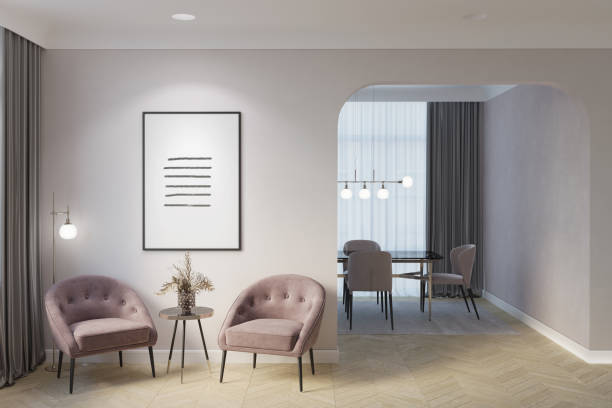Accent chairs, often recognized as pieces of art as much as functional furniture, have a rich history that intertwines with cultural evolution, artistic movements, and changing lifestyles. Their development has mirrored the social and economic shifts throughout the centuries, reflecting the tastes, styles, and practical needs of the time. This article delves into the chronology of accent chairs, exploring their origin, evolution, and significance in various eras.
Page Contents
Ancient Times
The genesis of accent chairs can be traced back to ancient civilizations like Egypt and Greece. In Egypt, chairs were seen as status symbols, reserved for royalty and high-ranking officials. These chairs were often ornate, adorned with carved figures and precious metals.
In ancient Greece, chairs evolved to become more democratic, found in ordinary homes. The Klismos chair, characterized by its curved backrest and tapered, outwardly curving legs, is a well-known example from this era.
Middle Ages
During the Medieval period, chairs were predominantly functional, serving the purpose of seating for the elite. The throne-like appearance of chairs became more evident, symbolizing power and authority. Often made from oak, these chairs were heavy and sturdy but lacked comfort.
Renaissance Period
The Renaissance saw a revival in artistic expression, and this was mirrored in the design of accent chairs. Carvings became more intricate, and new upholstery techniques allowed for increased comfort. Chairs like the Savonarola, with its X-shaped frame, were typical of the period.
Baroque and Rococo Eras
The opulence of the Baroque and subsequent Rococo periods were reflected in the ornate designs of accent chairs. Chairs were embellished with gilded wood, luxurious fabrics, and elaborate carvings. This era marked a shift from merely functional to aesthetically pleasing designs.
Victorian Era
The Victorian era brought mass production, allowing more people to afford accent chairs. The style ranged from Gothic Revival to the ornate and curvaceous designs of the Louis XV chair. The rise of the middle class saw a boom in interior decoration, with accent chairs playing a key role.
Modernism
The early 20th century marked a sharp departure from historical traditions with the rise of Modernism. Designers like Le Corbusier and Eileen Gray began to experiment with form and materials. Chairs like the Barcelona Chair by Ludwig Mies van der Rohe became icons of this era, emphasizing simplicity and functionality.
Accent chairs for living room
Accent chairs are the perfect addition to any living room, offering both style and comfort. These versatile pieces of furniture come in various designs, colors, and materials, allowing you to express your unique taste and enhance your room’s aesthetic. Whether it’s a bold pop of color or a classic, elegant design, accent chairs effortlessly elevate your living space. You may get living room ideas with accent chairs online.
Mid-Century Modern
Mid-century modern designs continued the trend of functional elegance. Designers like Charles and Ray Eames created pieces that were both beautiful and accessible, using new materials like molded plywood and fiberglass.
Contemporary Era
Today, accent chairs represent a fusion of past and present, embracing various styles and functions. The focus on sustainability, ergonomic design, and the blend of traditional craftsmanship with technology marks the current era.
Conclusion
Accent chairs have not only served as seating throughout history but have been a reflection of cultural shifts, artistic movements, and socio-economic changes. From the ornate chairs of ancient Egypt to the minimalist designs of the modern era, they tell a story of humanity’s evolving tastes, values, and lifestyles.
The history of accent chairs is as rich and varied as the people who have used them. They continue to be a vital part of our interiors, offering comfort, style, and a glimpse into our collective past. Whether viewed as works of art or essential pieces of furniture, accent chairs remain an enduring symbol of our shared human experience.

Lois Lane is a professional blogger and a seasoned Content writer for wellhousekeeping.com. With a passion for simplifying complex Home Decor topics, he provides valuable insights to a diverse online audience. With four years of experience, Lois has polished his skills as a professional blogger.




